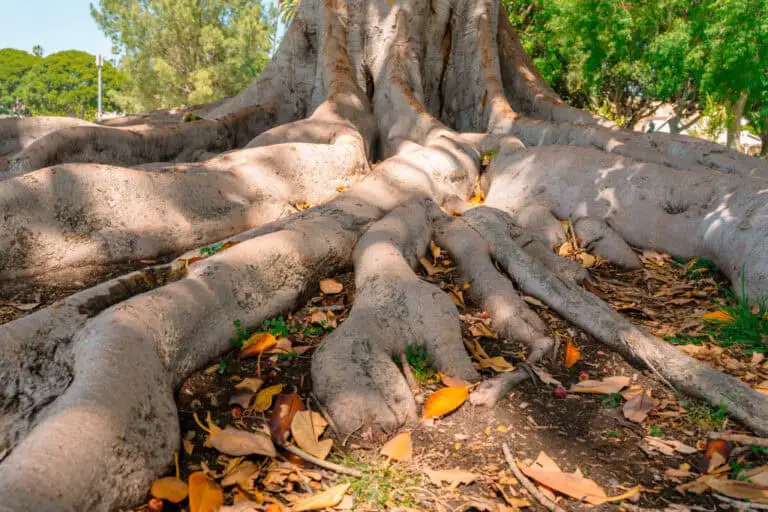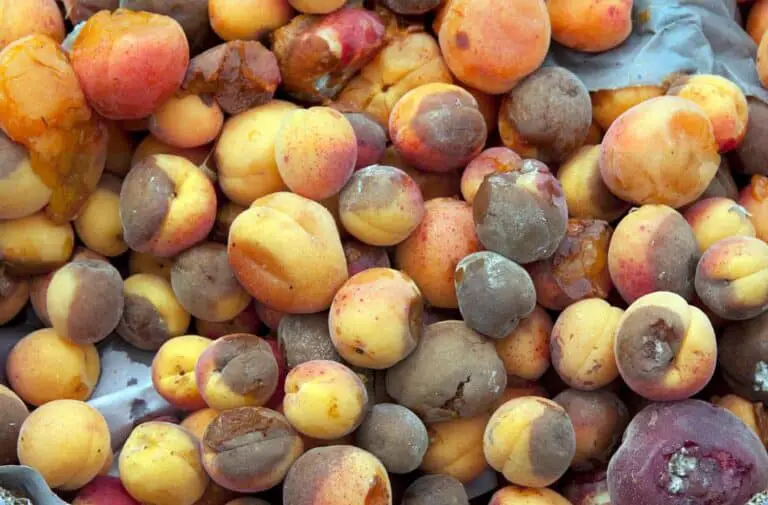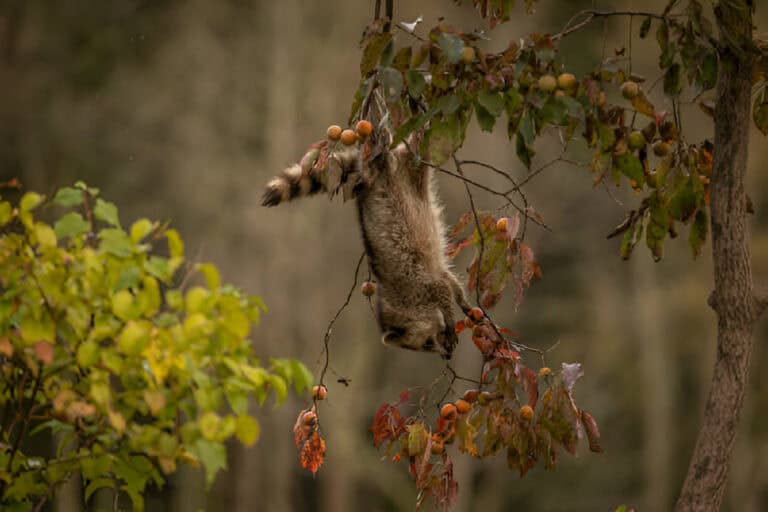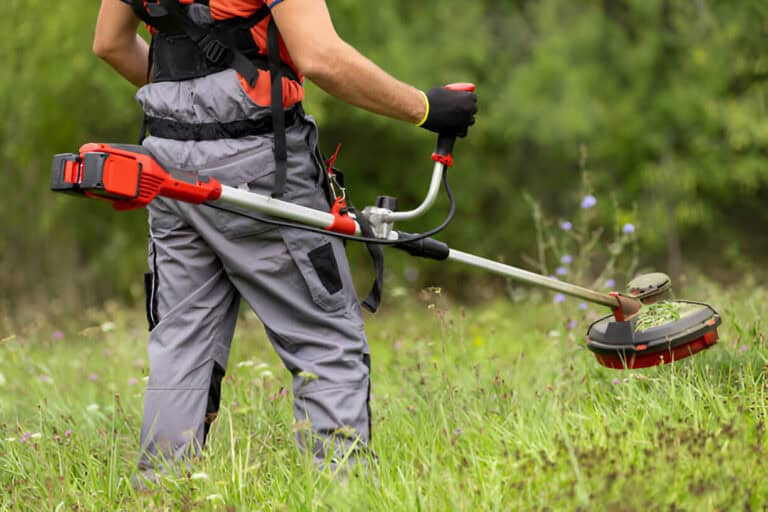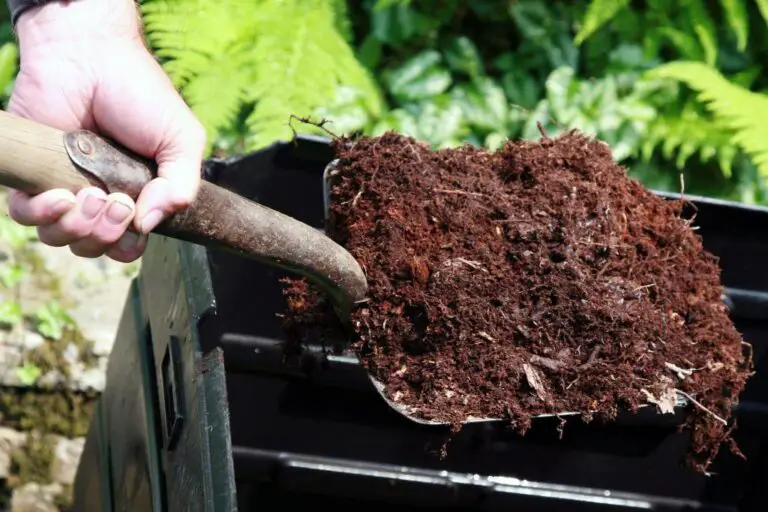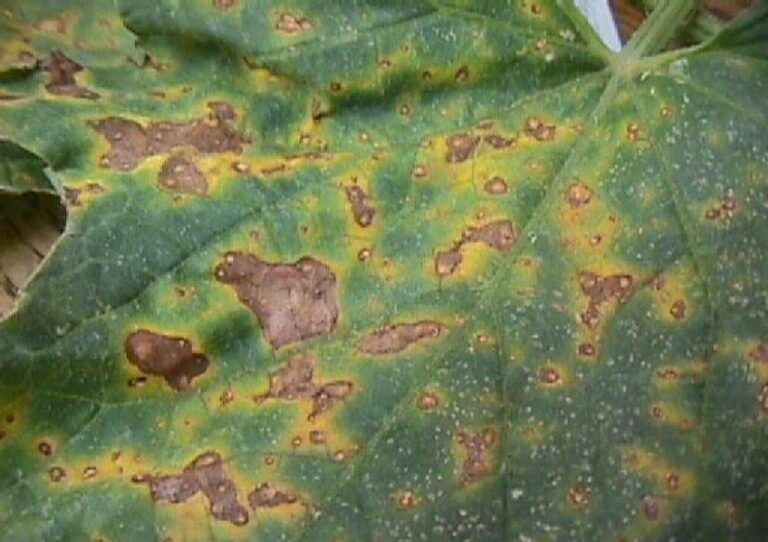How to Spot an Aphid Infestation in Large Trees (Protecting Your Trees)
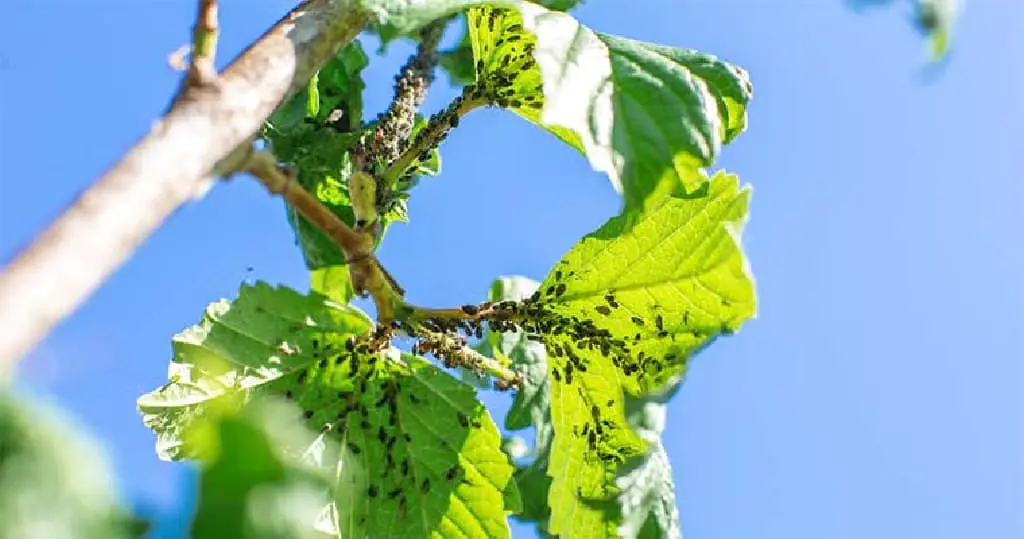
As a nature enthusiast and a proud tree parent, I’ve always admired the beauty and grandeur of large trees in my yard. They stand tall and offer shade, a home for wildlife, and a sense of peace. But with that beauty comes the responsibility of keeping them healthy.
Over the years, I’ve learned that aphids can be sneaky little pests, often hiding on the underside of leaves, wreaking havoc before you even know they’re there. So, let’s dive into how to spot an aphid infestation in large trees and, more importantly, how to protect these towering giants.
Overview of Aphid Infestation in Large Trees
Aphid infestations can pose a significant threat to large trees, often going unnoticed until the damage becomes severe. These tiny, sap-sucking insects can multiply quickly, targeting various tree species and weakening their health.
As they feed on the sap, they not only stunt growth but can also lead to a host of other issues, such as leaf discoloration and premature leaf drop.
Early detection of aphid infestations is crucial for maintaining tree health. When you catch the problem early, you can implement effective control measures before the infestation spirals out of control.
Regular monitoring of your trees helps you spot the first signs of trouble, such as curled leaves or sticky honeydew on the foliage. By staying vigilant and recognizing these indicators, you can take action to protect your trees, ensuring they remain healthy and vibrant for years to come.
Understanding Aphids: The Tiny Terribles
Aphids are like the uninvited guests at a garden party—tiny, green (or sometimes black or brown), soft-bodied insects that suck the sap from plants. They may be small, but they multiply faster than rabbits, and if you don’t catch them early, they can cause serious damage to your beloved trees.
I remember my first encounter with these little critters. One day, I noticed my tree’s leaves looking a bit sad and limp. Upon closer inspection, I found an army of aphids marching along the branches!
Why Should You Care?
Aphids feed on the sap of plants, which not only weakens the tree but can also lead to stunted growth, leaf curling, and even tree death in severe cases. Their feeding can also attract other pests and diseases, making your tree more susceptible to further damage. And let’s not forget about honeydew—the sticky substance they excrete—which can lead to sooty mold, making your tree look unkempt.
Signs of an Aphid Infestation
The key to protecting your large trees lies in early detection. Recognizing the signs of an aphid infestation can save you a lot of heartache. Here’s what to look out for:
Visual Symptoms
- Curling Leaves: If you notice leaves curling or wilting, it’s a red flag. Aphids suck the sap, causing the leaves to distort.
- Yellowing Foliage: Leaves that turn yellow or become discolored may indicate stress from sap loss.
- Sticky Residue: Honeydew, the sticky substance aphids produce, can coat leaves and branches. If your fingers get sticky after touching the leaves, it’s time to investigate.
- Sooty Mold: This dark, powdery substance can develop on honeydew-covered leaves, further impacting the tree’s health.
- Galls: Finally, you should inspect large trees in your landscape to see if they contain galls. Like many other garden pests, aphids lay eggs to reproduce. When aphids lay eggs inside or on a tree, the tree may respond by producing large growths known as galls.
Physical Inspection
To truly understand the extent of an aphid problem, I recommend a hands-on approach:
- Check Under Leaves: Use a small hand mirror or your smartphone’s flashlight to inspect the underside of leaves. Aphids love to hide there, making it their preferred feeding ground.
- Inspect New Growth: Aphids are particularly fond of tender, new growth. Pay special attention to the tips of branches and new leaves.
- Look for Ants: If you notice ants crawling on your trees, it might be time to investigate. Ants farm aphids for their honeydew, creating a symbiotic relationship that protects the aphids while they feed.
Table: Symptoms of Aphid Infestation
| Symptom | Description |
| Curling Leaves | Leaves bend or twist, losing their shape |
| Yellowing Foliage | Leaves turn yellow or develop spots |
| Sticky Residue | Honeydew left on leaves and branches |
| Sooty Mold | Dark, powdery growth on honeydew-covered leaves |
| Presence of Ants | Ants crawling up and down the tree trunk |
| Also read: How to Fix Okra Losing Leaves? |
Prevention Is Key
Now that you know what to look for, let’s chat about how to prevent these pesky critters from turning your trees into their personal buffet. A proactive approach can save you a lot of trouble down the line.
Promote Healthy Trees
Healthy trees are more resilient to pests. Here’s how you can nurture your trees:
- Water Deeply and Regularly: Just like us, trees need water to thrive. During dry spells, ensure your trees get adequate moisture. Deep watering encourages strong root systems, making your trees more resilient.
- Fertilize Wisely: Use a balanced fertilizer to promote healthy growth. However, don’t over-fertilize, as this can attract more pests.
- Maintain Soil Health: Healthy soil leads to healthy trees. Regularly add organic matter, like compost, to improve soil structure and nutrient content.
- Prune Strategically: Regularly prune dead or weak branches to improve air circulation and sunlight penetration. This not only keeps your tree healthy but also makes it less inviting to pests.
Introduce Beneficial Insects
Nature has a way of balancing itself, and beneficial insects can be your best allies in keeping aphids at bay. Ladybugs and lacewings are two natural predators of aphids. By encouraging these insects to visit your garden, you’ll help maintain the natural ecosystem. Plant flowers like marigolds or yarrow to attract these helpful critters.
Treatment Options
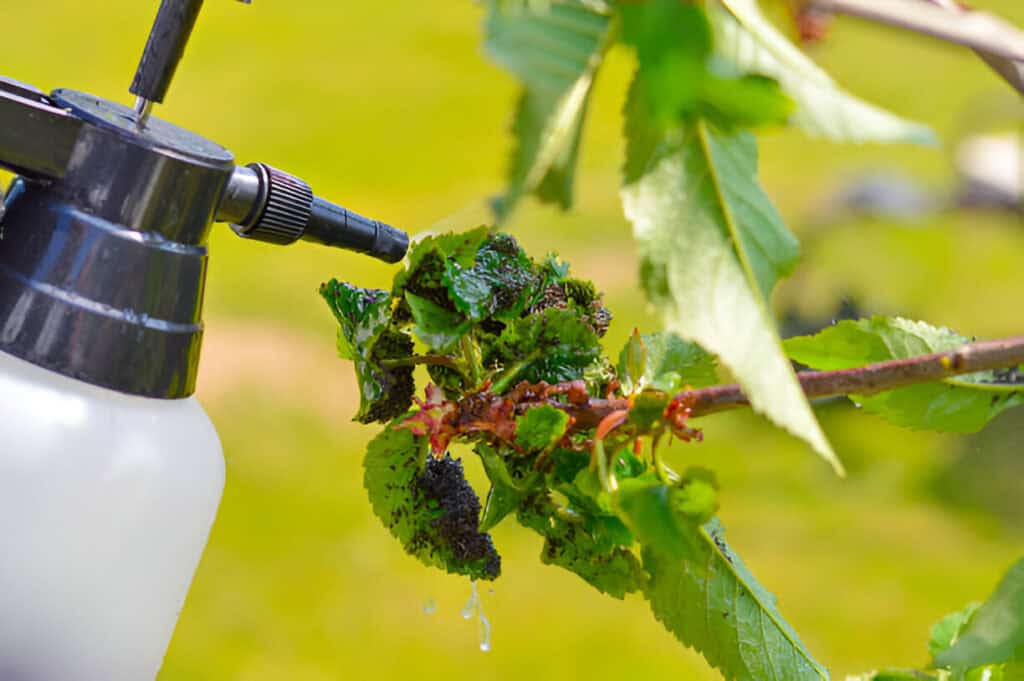
If you’ve already spotted aphids on your trees, don’t panic! There are several effective treatment options to rid your trees of these unwanted guests.
Natural Remedies
- Insecticidal Soap: This is my go-to solution for mild infestations. Mix a few tablespoons of liquid soap (not detergent) with water in a spray bottle and apply it directly to the aphids. The soap suffocates them, and it’s safe for your tree.
- Neem Oil: Extracted from the seeds of the neem tree, this oil disrupts the aphids’ life cycle. Dilute it according to the instructions and spray it on affected areas.
- DIY Spray: Create a homemade garlic or pepper spray. Mix crushed garlic or hot pepper with water, let it steep, and strain. Spray it on the affected areas to deter aphids.
Chemical Treatments
If natural remedies don’t cut it, you may need to consider chemical pesticides. However, always exercise caution. Here are a few tips:
- Choose Targeted Treatments: Opt for products specifically designed for aphids. Read the label carefully to ensure it’s safe for large trees and other beneficial insects.
- Apply in the Evening: Pesticides can harm pollinators, so applying them in the evening when these insects are less active is a good idea.
- Follow Instructions: Always adhere to the instructions provided on the label to minimize risks to your trees and the environment.
Table: Treatment Options for Aphids
| Treatment | Description | Usage Tips |
| Insecticidal Soap | Safe, suffocates aphids | Apply directly to infested areas |
| Neem Oil | Disrupts life cycle of aphids | Dilute and spray on affected areas |
| DIY Garlic/Pepper Spray | Deters aphids naturally | Use fresh ingredients for best results |
| Chemical Pesticides | Targeted treatments for severe infestations | Apply in the evening, follow label directions |
| Check out: Why Is Crabapple Tree Losing Leaves? |
Monitor and Maintain
Once you’ve dealt with the infestation, your work isn’t over. Keep a close eye on your trees. Regular inspections can help catch any future infestations before they spiral out of control. I set aside time every week to check my trees for any changes. It’s like a health check-up for my leafy companions!
Document Changes
Keeping a journal of your observations can help you track the health of your trees over time. Note any signs of stress, treatments used, and their effectiveness. This will be invaluable for future reference.
Engage with Your Community
Don’t underestimate the power of sharing knowledge. Join local gardening clubs or online forums where fellow tree lovers exchange tips and tricks. You’ll gain insights from those who have faced similar challenges and perhaps even discover new strategies for keeping your trees healthy.
Final Thoughts
Aphids may be small, but they can wreak havoc on your beloved large trees if left unchecked. By recognizing the signs of infestation early, taking preventive measures, and employing effective treatments, you can protect your trees and ensure they remain healthy and vibrant for years to come.
I’ve learned that tree care is a journey, one that requires vigilance, patience, and a bit of elbow grease. So, the next time you find yourself enjoying the shade of your majestic tree, take a moment to appreciate the effort it takes to keep it thriving. With the right knowledge and tools, you can fend off those pesky aphids and ensure your trees continue to stand tall as a testament to nature’s beauty. Happy tree tending!

